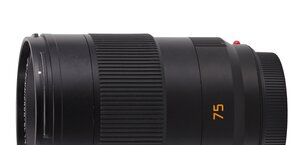Venus Optics LAOWA 9 mm f/5.6 FF RL
4. Image resolution
Let's check how the Venus Optics LAOWA 9 MM F/5.6 FF RL compares – its results in the frame centre and on edges of APS-C and full frame sensors are presented below.

Please Support UsIf you enjoy our reviews and articles, and you want us to continue our work please, support our website by donating through PayPal. The funds are going to be used for paying our editorial team, renting servers, and equipping our testing studio; only that way we will be able to continue providing you interesting content for free. |
- - - - - - - - - - - - - - - - - - - - - - - - - - - - - - - - - - - - - - - - - - - - - - - -
Before we start analysing the results of the tested lens let's present its limits forced by laws of physics. Resolution records, mentioned at the beginning of this chapter and amounting to about 78 lpmm, are reached by fast lenses stopped down to f/2.8-4.0. For the Laowa, tested here, these aperture levels are unatainable for obvious reasons. By f/5.6 the resolution values of record-holders amount to 70-72 lpmm and you can say they are close to diffraction limits of that aperture and that sensor. If the Laowa was a lens with all abberations under firm control and perfectly corrected it might try and reach these 70 lpmm at its maximum relative aperture. Still, it is obvious that a lens with such extreme parameters can't correct all the aberrations in a perfect way.
If you want to come even closer to an answer what value constitutes a good level in this case, you can remind yourself about results reached by f/2.8 prime lenses at f/5.6 while attached to the Sony A7R II. The best of them we got 62-64 lpmm and that's, in our opinion, the good reference point. The situation could be called really splendid if the Laowa reached similar or slightly weaker results at its maximum relative aperture as lenses 2 EV faster. After all you don't have to search long and hard in order to find different f/2.8 prime lenses that at f/5.6 got resolution of 57-59 lpmm so we think also such level wouldn't put the Laowa, tested here to shame. Now we are reaching the crux of the matter – the Laowa 5.6/9 at its maximum relative aperture has a result of over 58 lpmm and slightly less (almost 56 lpmm) on stopping down to f/8.0. Taking the parameters of the tested lens into account these are very good sharpness levels, allowing you to take high resolution photos.
With such a wide angle of view it's also important how a lens performs on the edge of the frame and here the Laowa has nothing to be ashamed of. The edge of the APS-C sensor is very sensible because up from the maximum relative aperture you deal with fully useful values of 47 lpmm. The results we got by f/8.0 remain, within the margin of error, the same.
With a field of view of 135 degrees we didn't have high expectations connected with image quality on the edge of full frame. Indeed at the maximum relative aperture the lens doesn't reach full usefulness level. Still, it's important that by f/8.0 and by f/11 that usefulness is reached and images are of sensible quality across the frame. At that point, it would be foolish to ask for more.
Taking into account the parameters of the Laowa 5.6/9 we think it met our expectiations. If you can produce photos that are sharp across the frame with a lens offering an angle of view of 135 degrees, (ok, perhaps they are not so sharp in the very corners but let's forget about them for a moment) in our view the lens performs as it should and it doesn't disappoint.
At the end of this chapter, traditionally, we present crops taken from photos of our resolution testing chart which were saved as JPEG files along with RAW files we used for the analysis above.
| A7R II, JPEG, 9 mm, f/5.6 |
 |
| A7R II, JPEG, 9 mm, f/8.0 |
 |






